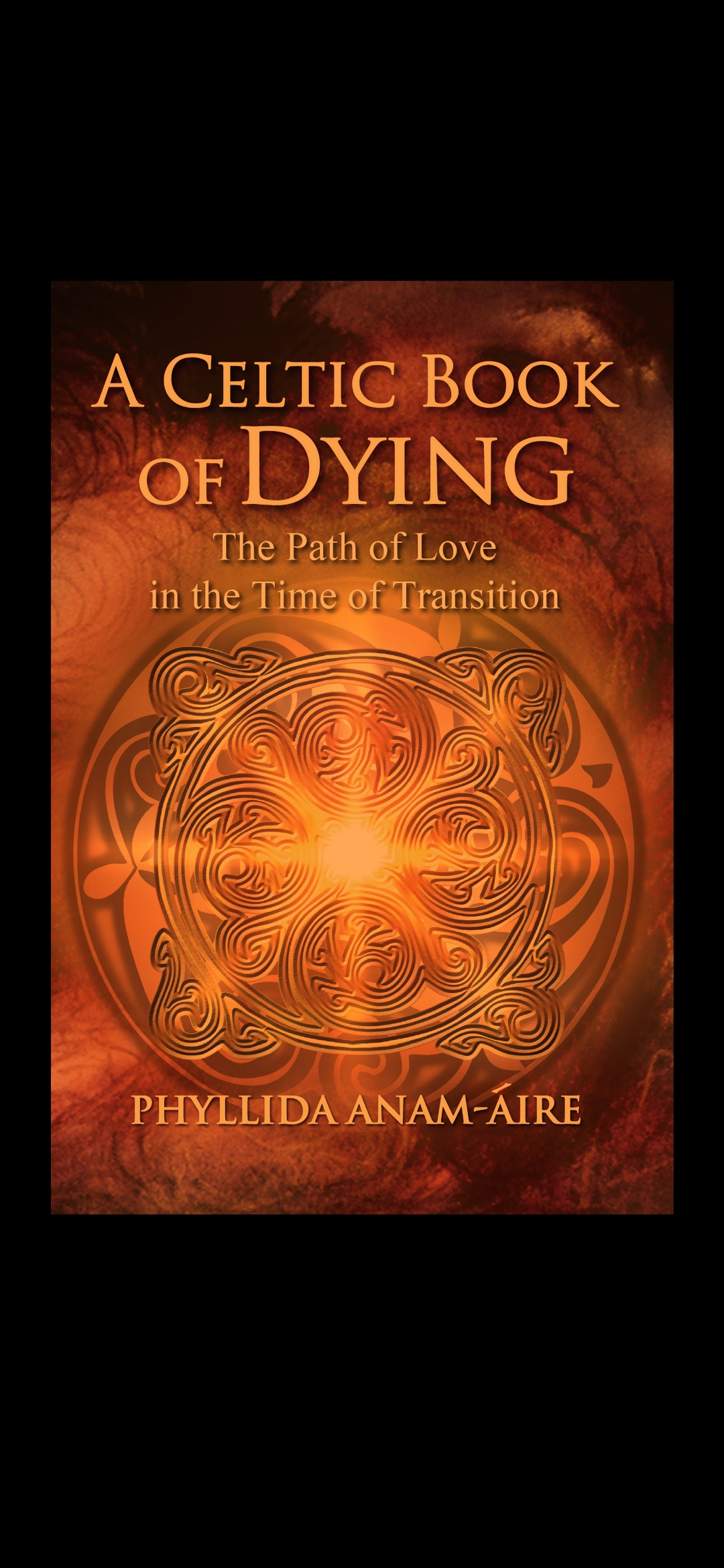Phyllida Anam-Áire’s book offers spiritual knowledge on the matters of dying, but some of it may not be relevant to all readers.

(Image description: A screenshot of the e-book. An intricate circle of spirals is shown on a brown, carved surface with rays of light shining through. The title text reads, A Celtic Book of Dying: The Path of Love in the Time of Transition, along with the author’s name Phyllida Anam-Áire.) Credit: My own work.
Published by Findhorn Press in 2022, Phyllida Anam-Áire’s book offers beneficial advice and rituals regarding the process of dying for caretakers, the terminally ill, loved ones, and those who seek to confront the spiritual matters of death before it is their time; however, there are some caveats that may make readers hold off from buying it.
Anam-Áire discusses the different passageways of birth, death, and rebirth, referred to as Áite, which is shown as an equivalent to the Tibetan bardo. They mark different transition periods in the transmigration of the soul. The core goal is to eventually shed hatred, loss, sorrow, abuse, and other conflicting issues that keep a soul from finding a resting place of peaceful, universal love. Personal anecdotes from her family life and her experiences in caring for the dying are provided and supply reflective questions to delve into how we want to live our lives to their fullest, as well as rituals to aid the dying, ancestors, and the living. She stresses that processing these issues before death in vital so that souls don’t have to linger restlessly in these stages.
These are a few points that detracted from the book, and it is up to the reader whether these faults reduce from the overall intent of helping the dying and their loved ones through an incredibly difficult time. Namely, a mixture of watered down concepts from Irish, Welsh, and Gaulish mythologies and insertion of New Age concepts without significant acknowledgment to these cultural ties dampens any Celtic connections (outside of Brighid in prayers and rituals) she’s attempting to make.
The word seábhean is listed in a glossary at the beginning of the book, given the definitions of “female shaman, saying yes to life, or old wise woman”; however, this word doesn’t exist as an actual term for a wise or elderly woman. As a reference point, there was another book titled The Way of the Seabhean by Amantha Murphy released in 2021, and it was met with criticism because of its use of the pseudo-Irish word seabhean and New Age ideas being presented as part of an ancient Irish tradition. The author states she was instructed not to consult any books on Celtic death rites and to only adhere to the teachings she learned at the Newbold House Community in Scotland.
Besides the inaccurate word, supposed claims of what ancient Celts did to help in the birthing process are treated as fact. Also, LGBTQIA+ people in said rituals are removed from the possibility of conceiving children and are awkwardly shoehorned into the important roles of astrologer, poet, storyteller, and so on in an attempt at inclusivity. The terms used today didn’t exist thousands or even hundreds of years ago, but such romantically, sexually, and gender diverse people did exist even then.
Even with these problems, I did find parts of her book worthwhile. Firstly, I enjoyed her anecdotes with her family and in her interactions with the dying. She clearly cares about those she comes in contact with, always making sure they are comfortable and does whatever she can to aid in a gentle passage through seeking the permission of the patient if at all possible; however, she does indicate there should be healthy boundaries between the watcher and the dying patient.
Secondly, the creative exercises are helpful for those who may not be near death, and they give the reader pause to contemplate the answers to these questions and meditations before their eventual passing. Some queries do ask the reader to possibly forgive those who have wronged them in some way. The questions encourage people to seek out what brings them the greatest joy and fulfillment, rather than goals determined by other people. Another appropriate meditation is the use of a visualized tree to connect with one’s ancestors.
Overall, my feelings toward the book are mixed. On one hand, Anam-Áire demonstrates her ability to show care and consideration for the dying, and offers soulful meditations to prepare them and ourselves for what comes after we die. On the other, there’s not any specific references to keening (given that Brighid created this practice while mourning Her son, Ruadan) or other activities found within Irish wakes. I’m not sure why she didn’t delve deeper into this rich practice and only stuck with meditations described in the book. As such, I give A Celtic Book of Dying 3 stars out of 5.
Leave a Reply